In 1846, conferences with the Victory Manufacturing Company resulted in the gift of a plot land for a church edifice and a school building. It wasn’t until 1868 that Dr. Charles H. Payn provided the impetus to build the church. A portion of the original land grant was later ceded to the National Park Service by St. Stephen’s and is now part of the grounds around the Philip Schuyler House.
The Rev. R.F. Crary of Poughkeepsie provided the church’s architectural design, which is a fair reproduction of the best type of English rural churches. The actual construction was carried out under the direction of Master Mason James W. Camp of Glens Falls and Master Carpenter William Nichols of Albany. While excavating the foundation of the church an Indian grave was uncovered. The cornerstone at the southeast wall contains two flint arrowheads, two copper beads and the crown of a human tooth from that grave.
The church bell was cast at the foundry of Jones and Brothers in Troy, NY and was paid for by Dr. Payn. It was hung in place on Tuesday, in Whitsun week, May 18, 1869. Two small lancet stained glass windows in the bell tower and two in the sacristy along with the larger windows of the church have all undergone major restoration.
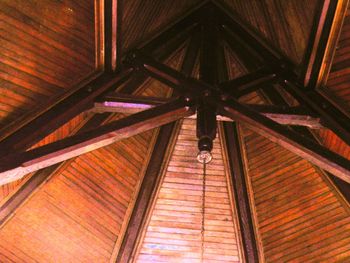 The pews & beams that you see here were all hand crafted. If you look up, please note the beams that span the nave. They are made of American chestnut. For ages the American chestnut was one of the most important trees in our forests from Maine south to Florida, from the Piedmont west to the Ohio valley. In the heart of its range a count of trees would have turned up one chestnut for every four oaks, birches, maples and other hard woods. Chestnut blight, an Asian fungus to which our chestnuts had very little resistance, was discovered in New York city in 1904. The blight spread quickly, leaving only dead and dying stems. By 1950, except for the shrubby root sprouts the species continually produces (and which also quickly become infected), the keystone species on some nine million acres of eastern forest had disappeared.
The pews & beams that you see here were all hand crafted. If you look up, please note the beams that span the nave. They are made of American chestnut. For ages the American chestnut was one of the most important trees in our forests from Maine south to Florida, from the Piedmont west to the Ohio valley. In the heart of its range a count of trees would have turned up one chestnut for every four oaks, birches, maples and other hard woods. Chestnut blight, an Asian fungus to which our chestnuts had very little resistance, was discovered in New York city in 1904. The blight spread quickly, leaving only dead and dying stems. By 1950, except for the shrubby root sprouts the species continually produces (and which also quickly become infected), the keystone species on some nine million acres of eastern forest had disappeared.
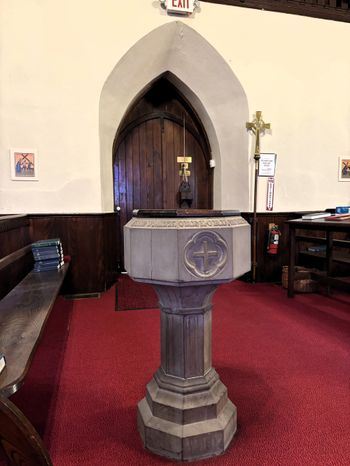
Dr. Payn also purchased the Baptismal font. It was first used on Good Friday in 1869
although the building was not complete at the time. The Baptismal ewer was an Easter
gift to the church from the St. Agnes Guild in 1906.
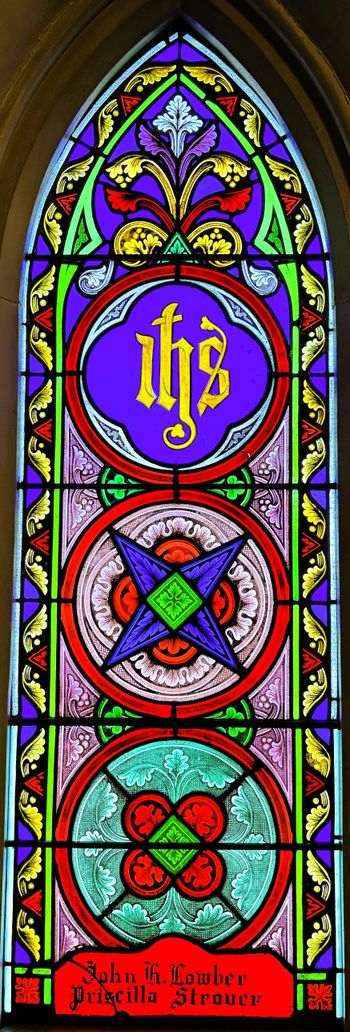
The window on the east wall at the back bears the Greek initials of Jesus’ name.
It was dedicated to John H. Lowber and Priscilla Strover. The Lowber and Strover
families were loyal supporters during the early years of the parish.
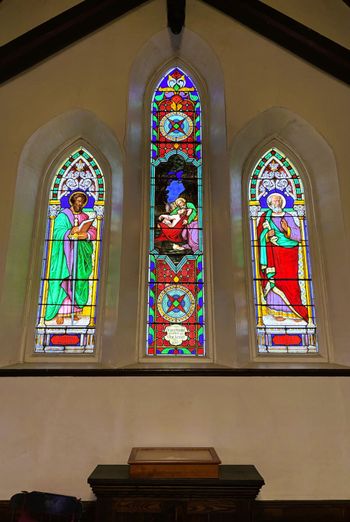
Three windows at the back of the church depict people of great biblical importance. On the left is St. Paul and the window is dedicated to Lt. Col. C.R. Mudge who was the inspiring leader of the 2nd Massachusetts regiment and who fell mortally wounded at Spangler’s Springs during the Civil War. The center window portray the “Good Samaritan” and is dedicated to George Strover and Eliza Brasier. St. Peter is depicted in the window at the right, which is dedicated to the Samuel Payn and Rebekah Northrop.
Below the three windows you note a cabinet which houses a coverlet often laid over a coffin at funerals. The glass case of the cabinet contains our Book of Donations, which is used to record various items that have been given to the church over the years.
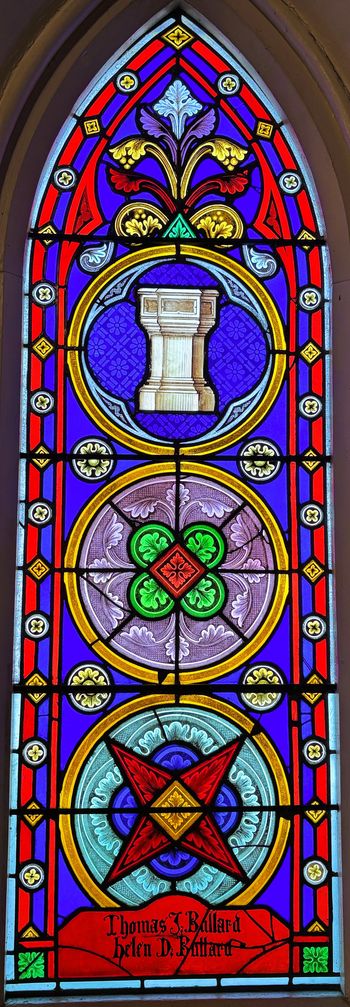
Highlighted in the west wall window at the back is the baptismal font.
The unique creative style of all the windows is especially evident here
in the font itself. The stained glass is characteristic of the artistry of the
period. It gives the font a 3-D look. The window is dedicated to
Thomas J. and Helen (Davison) Bullard. Her father was silversmith and
longtime Warden of the church.
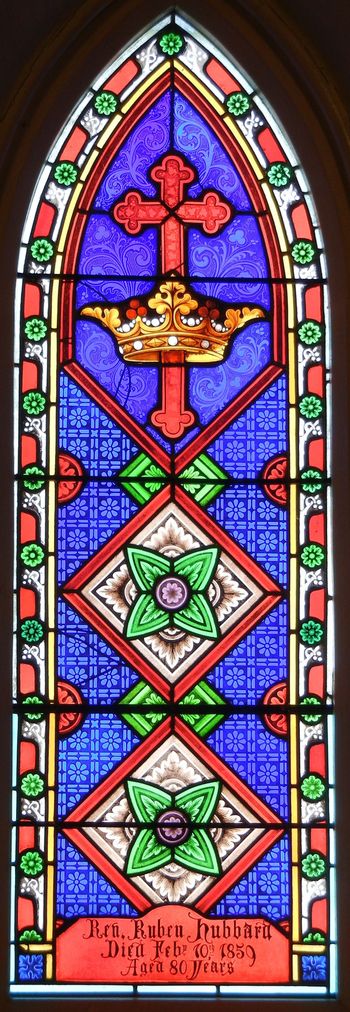
The crown shown in the next window commemorates Christ the King,
the feast celebrated the Sunday before Advent. Observe the intricate
detail of the tile-like mosaic background of this west wall window.
This window is dedicated to the Rev. Reuben Hubbard, a missionary-minded
priest from Stillwater who celebrated regular Episcopal services in Schuylerville
starting in 1838.
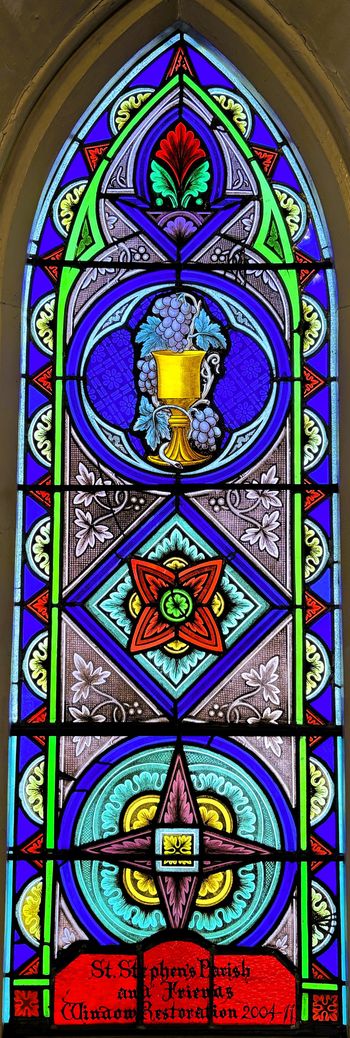
We are reminded of Christ’s first miracle at Cana by the chalice shown
in the next west wall window. It is thought that this window and previous
crown window may have been constructed at the same time because of
the mosaic background pattern in the glass. This window is dedicated to
St. Stephen’s Parish and Friends for their generous contributions to the
window restoration project from 2004 to 2011.
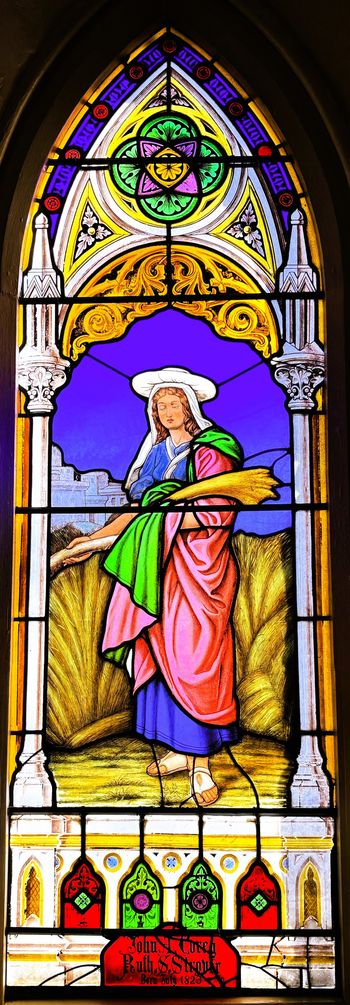
Returning our attention to the east wall we see Ruth
(from the Book of Ruth) bringing in the sheaves.
Coincidentally, it bears a dedication to Ruth S. Strover,
as well as John A. Corey.

The next window shows the Holy Family: Joseph, Mary and Jesus
who is blessing a youth thought to be his cousin, John the Baptist (noted
by the fur lining the inside of John’s garb). This picture is particularly
noteworthy because Jesus is holding a cross. The cross was not a common
icon in His day. This window is dedicated to John R. Preston.
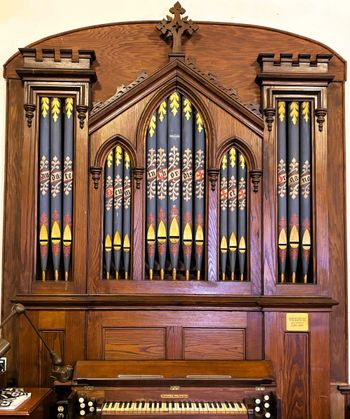
Our organ appears on the Jardine list published in 1869. For many years an imitation organ was in use, as the pipes and rack boards of this one were hastily removed from the Jardine chest and dumped in the reservoir area, presumably because the Jardine required extensive repair work. For a time, a speaker cabinet stood behind the case. The Jardine was put back together in 1963, and though not quite authentic tonally, most of the voicing is intact.
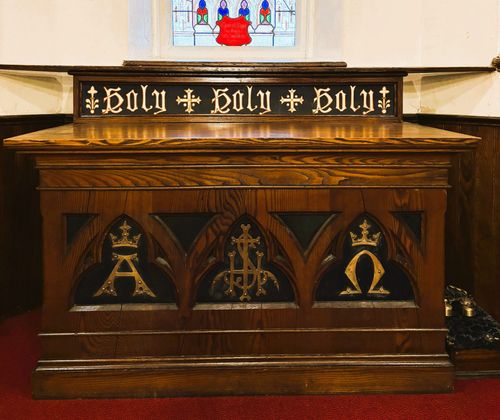
The altar that stands in the chancel is adorned with the Greek symbols “Alpha”, meaning “the beginning” and Omega”, meaning the “end”. The middle insignia reads “iota, eta, sigma”, the Greek equivalent of the first three letter of Jesus’ name.



In the window left of the altar we see the baptism of Christ by John the Baptist. This window is dedicated to Henry McCoy and Matilda E. Strover. The center window shows the martyrdom of St. Stephen for whom the church is named. Itis dedicated to Henry McCoy and Matilda E. Stover. The window to the right of the altar reminds us of Christ’s ministry at the last supper and institution of communion with the symbols of the bread and wine as the body and blood of Christ. The figure receiving communion is depicted as a beardless young man thought to be the “beloved disciple.” This window is dedicated to Charles E. Bleecher and Grace Strover.

Far above the altar you will notice our skylight window. This image of the Holy Spirit in the form of dove depicts once again the mosaic detail that makes this an excellent example of a beautiful stained glass.
In 2025, St. Stephen’s Church gained recognition on both the State and National Registries of Historic Places.
